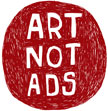I have always loved technology, and I have specifically favored image manipulation software such as Photoshop. Lately however, I have discovered some of the technological wonders that exist outside artistic and visual design software. Holy Cow – it is a whole new world out there!
Working with new technologies has helped me stretch professionally, mentally and socially. These opportunities for growth (aka hard work and mistakes) have encouraged me to think about what is important as a learner and as a teacher. As I busy myself getting ready for the start of a new school year, I also find that I am reflecting on recent experiences with web 2.0 technologies. Rewards and challenges alike, I have learned more than I can shake a stick at (and there is whole lot-a shaking left to do).
I have spent the month of July participating in another fantastic Instructional Design and Technology class. The course, Teaching and Learning with Web 2.0, has opened multiple doors to the world of virtual collaboration for me. I have always leaned toward the ‘two heads are better than one’ mentality and at the encouragement of my professor, Dr. Clif Mims, I have been working to build my Professional Learning Community or PLC. When seeking out other artists, art teachers and technology geeks, I have found Twitter, Diigo and Ning to be especially great social and professional networking tools. My current PLC also includes my classmates… we are after all, hoping to accomplish the same goal… to soak up as much as we can while exploring Web 2.0 (and you thought I was going to say, “to earn an A”).
In July, I blogged about my general experiences with Web 2.0. Today, I will focus more specifically on the benefits and challenges of a wonderful Web 2.0 tool called a ‘wiki’.
Earlier this summer I designed a wiki for elementary art students. Although, I realize that I am not finished with the project plan, I previously believed that I had thought through and understood the concept of a wiki. I also assumed that I had considered most of what would be necessary to involve students in such a project. Now that I have had the opportunity to work on a wiki with other graduate students I have a much clearer understanding of the types of interactions and involvement required of students who will be working on a collaborative project of this nature. True to honest self reflection, I will let you know that it is a REALLY good thing that I have had the opportunity to participate and contribute to this type of collective knowledge prior to requesting similar participation from my own students.
The wiki is designed to allow individuals to pool knowledge and resources, build and expand on each other’s thoughts and work. Engaging in this collaborative effort with my classmates has been a terrific learning experience. While collaboration is nothing new to me, collaboration via technology has been a new experience. The following statements summarize my learning:
1) Collective knowledge is more powerful than that of the individual,
2) Individuals bring a variety of experiences and talents to the work,
3) Sharing the work can have benefits and challenges.
To summarize the first two statements, I will point out what may be obvious to most: we all think differently and have different talents and skills to offer to the whole. When these unique differences and skill sets are harnessed, collected, and used to create something new, awesome work begins to take shape.
Most likely my peers would agree that we are also quite pleased not to be individually responsible for developing the entire Teaching and Learning with Web 2.0 Wiki. Sharing the work enables each of us to fully investigate our own areas of responsibility and maintain some sense of sanity.
Additionally, engaging in virtual collaboration has provided me with learning opportunities that I will want to keep in mind as I facilitate student learning with technology. In the third statement, I mention that sharing the work can be a challenge. In other words, unless we happen to have an unusually close relationship, there is some level of unease when collaborating with others.
The challenges for me have been small… almost, but not quite, insignificant:
1) Deciding what to work on: I’m hesitant to take on a job that someone else might want, but don’t want to sit on it too long for fear of being left with a job I’d rather not have – What’s a girl to do?
2) Not wanting to offend: I also want to be considerate of my classmates, their work and writing styles. It is a challenge to review and edit someone else’s work when they have not specifically requested that you do so… will I come across as a know it all? Will he/she think I am a writing or design snob?
3) How will we credit the work? Apparently, we are not to follow the safe method of organizing authorship in alphabetical order… we are to decide which of us has done the most work and list authors in order of most contributed. Hmm, anyone else worried here???
I am a firm believer in collaboration and web based technologies make it easier than ever to engage in collaborative opportunities. While, I have complete faith in the intellect and talents of my classmates, it is important to think about the challenges involved in collaborative efforts. As a teacher, I will use this experience to discuss such challenges with my students and seek their input to develop strategies and protocols for these and similar issues.
|
0 Comments
Your comment will be posted after it is approved.
Leave a Reply. |
Angela V. ChristopherArtist, Mother, Teacher, Geek Check out my other sites:
Categories
All
|

 RSS Feed
RSS Feed

